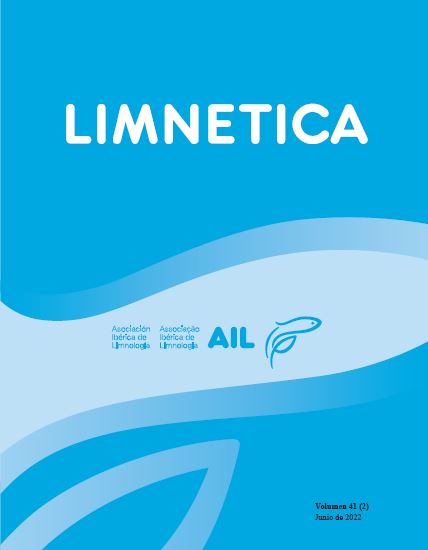Mar Menor lagoon (SE Spain) chlorophyll-a and turbidity estimation with Sentinel-2
Abstract
Mar Menor is a Mediterranean Coastal lagoon with high environmental and social value, but has suffered important episodes of contamination in recent years due to heavy rains, sediment dragging and polluting substances mainly from agriculture as well as the entry of mining waste, causing an increase in eutrophication. Water quality variables such as chlorophyll-a concentration [Chl-a] and turbidity, can be studied through its optical properties by remote sensing techniques. In this work, a methodology is proposed for monitoring [Chl-a] and the turbidity of the Mar Menor using Sentinel-2 images. For this purpose, an extensive database of both variables was used consisting of data taken on different dates between 2016 and 2019 at 12 points of Mar Menor. The images were atmospherically corrected using Case 2 Regional Coast Color Processor (C2RCC) version for turbid waters (C2X) to obtain the water surface reflectance. Then several arithmetic relations between database and reflectance bands used in the bibliography for [Chl-a] and turbidity were analyzed. Comparing the results of each one of these relations with the in situ data, decided that the best index for [Chl-a] estimation is the relation (R560 + R705)/ (R560 + R665) with an RMSE = 2.6 mg/m3 and a NRMSE = 9.1 % and for turbidity R705*R705/R490 with an RMSE = 1.5 NTU and a NRMSE= 10.9 %. Finally, by applying these relationships on different dates, thematic maps of [Chl-a] and turbidity of Mar Menor were obtained. One of these images was some days after September 2019 torrential rains, in which a considerable [Chl-a] and turbidity increase was observed
##submission.downloads##
Pubblicato
Fascicolo
Sezione
Licenza
Los autores que publican en esta revista están de acuerdo con los siguientes términos:
- Limnetica está bajo una licencia de Creative Commons Atribución-NoComercial 4.0 Internacional.
b. Los autores pueden establecer por separado acuerdos adicionales para la distribución no exclusiva de la versión de la obra publicada en la revista (por ejemplo, situarlo en un repositorio institucional o publicarlo en un libro), con un reconocimiento de su publicación inicial en esta revista.
c. Se permite y se anima a los autores a difundir sus trabajos electrónicamente (por ejemplo, en repositorios institucionales o en su propio sitio web) antes y durante el proceso de envío, ya que puede dar lugar a intercambios productivos, así como a una citación más temprana y mayor de los trabajos publicados (Véase The Effect of Open Access) (en inglés).


